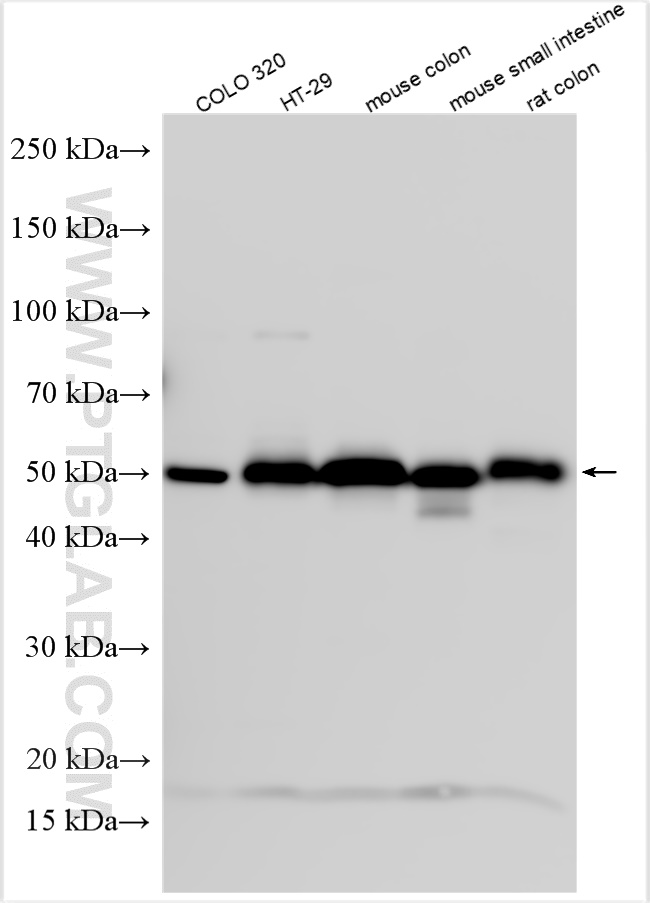验证数据展示
经过测试的应用
| Positive WB detected in | COLO 320 cells, HT-29 cells, mouse colon tissue, mouse small intestine tissue, rat colon tissue |
推荐稀释比
| 应用 | 推荐稀释比 |
|---|---|
| Western Blot (WB) | WB : 1:500-1:2000 |
| It is recommended that this reagent should be titrated in each testing system to obtain optimal results. | |
| Sample-dependent, Check data in validation data gallery. | |
产品信息
25941-1-AP targets GPA33 in WB, ELISA applications and shows reactivity with human, mouse samples.
| 经测试应用 | WB, ELISA Application Description |
| 经测试反应性 | human, mouse |
| 免疫原 | GPA33 fusion protein Ag12655 种属同源性预测 |
| 宿主/亚型 | Rabbit / IgG |
| 抗体类别 | Polyclonal |
| 产品类型 | Antibody |
| 全称 | glycoprotein A33 (transmembrane) |
| 别名 | A33, Cell surface A33 antigen, Glycoprotein A33, GPA33 |
| 计算分子量 | 319 aa, 36 kDa |
| 观测分子量 | 50 kDa |
| GenBank蛋白编号 | BC074830 |
| 基因名称 | GPA33 |
| Gene ID (NCBI) | 10223 |
| RRID | AB_3669509 |
| 偶联类型 | Unconjugated |
| 形式 | Liquid |
| 纯化方式 | Protein A purification |
| UNIPROT ID | Q99795 |
| 储存缓冲液 | PBS with 0.02% sodium azide and 50% glycerol, pH 7.3. |
| 储存条件 | Store at -20°C. Stable for one year after shipment. Aliquoting is unnecessary for -20oC storage. |
背景介绍
Glycoprotein A33 (GPA33) is a transmembrane glycoprotein that belongs to the immunoglobulin superfamily (PMID: 9862345; 9012807). It contains an extracellular region of 213 amino acids, a transmembrane domain, and a highly polar intracellular tail containing four consecutive cysteine residues (PMID: 9012807). GPA33 is specifically expressed on the basolateral surfaces of intestinal epithelial cells of all lineages and is found in 95% of primary and metastatic colorectal cancers (PMID: 10960348; 10950144; 21541536). GPA33 may have a role in cell adhesion and has been implicated in immune dysregulation (PMID: 9012807; 33728639).
实验方案
| Product Specific Protocols | |
|---|---|
| WB protocol for GPA33 antibody 25941-1-AP | Download protocol |
| Standard Protocols | |
|---|---|
| Click here to view our Standard Protocols |
